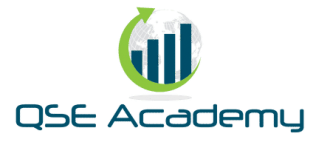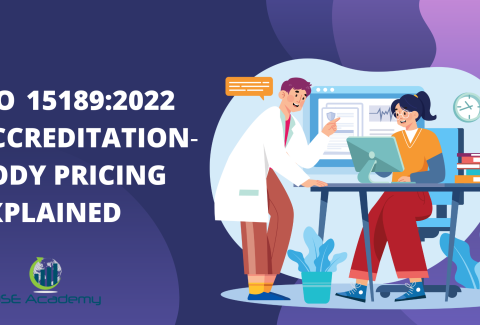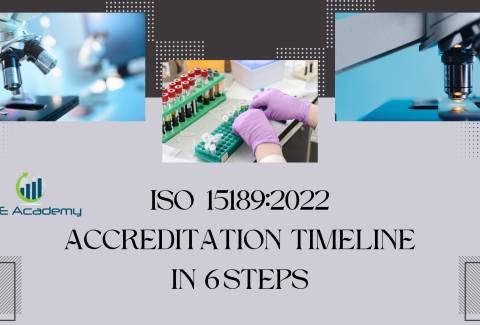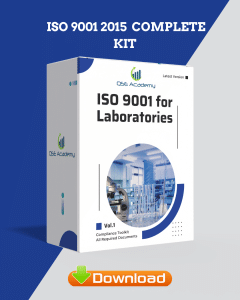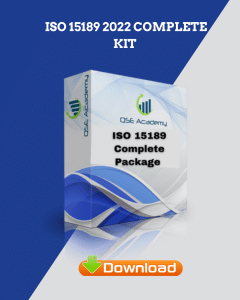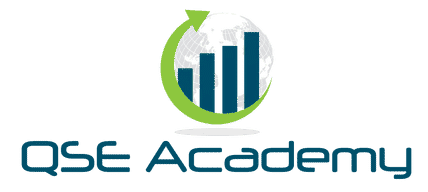Personnel Competence Under ISO 15189:2022
Last Updated on October 22, 2025 by Hafsa J.
Personnel Competence Under ISO 15189:2022
Let’s be real—when most labs think about ISO 15189, they focus on equipment calibration, validation protocols, or fancy quality manuals. But in my experience helping over seventy medical labs prepare for accreditation, one area gets overlooked time and time again: personnel competence.
And yet, it’s one of the biggest deal-breakers during audits.
I’ve seen brilliant lab professionals stumble—not because they weren’t capable, but because their competence wasn’t clearly defined, documented, or aligned with the new 2022 requirements. The updated ISO 15189:2022 standard raises the bar. It’s not just about having qualified people on paper anymore—it’s about proving they’re competent for the exact tasks they perform, under real conditions.
That’s exactly what we’ll unpack here.
You’ll walk away with a clear, practical understanding of what ISO 15189:2022 actually expects when it comes to competence—plus, how to document it, assess it, and improve it without turning your lab into a paperwork factory.
Ready? Let’s dive in.
What ISO 15189:2022 Really Means by “Personnel Competence”
Here’s what I’ve noticed: when people hear the word competence, they often think it just means having a degree or some experience in the field. But under ISO 15189:2022, it’s a whole different ball game.
So what is competence, really?
In plain terms, ISO 15189:2022 defines competence as having the ability to apply the right knowledge and skills to perform tasks correctly—every single time, under real working conditions.
This isn’t just about qualifications. It’s about performance.
Let me give you an example. I worked with a diagnostics lab in Southeast Asia that had a rockstar technician—on paper. But during our internal review, we found out she had never been trained on the updated version of the PCR analyzer. No one caught it, and guess what? That came up in their external audit. They didn’t fail, but it was a close call.
The key takeaway?
ISO 15189:2022 is all about proof—can your staff actually do the job, and can you show evidence of that in real-world settings? If not, it’s time to tighten things up.
Qualification, Education, and Experience
Let’s be honest—most labs assume that if someone has a degree or certificate, they’re good to go. But ISO 15189:2022 asks you to go deeper. It’s not just what someone studied, it’s whether they have the right background for the actual work they’re doing in your lab.
What the standard expects
You need to ensure that every team member has the education, qualifications, and experience that match their specific tasks. That means:
-
A medical technologist running complex tests should have relevant clinical or diagnostic training.
-
A phlebotomist drawing patient samples should have proof of hands-on training and supervision.
-
A lab aide preparing media should know contamination risks—even if they’re not interpreting results.
Here’s where many labs get tripped up: they don’t align job roles with real-life responsibilities.
Real-world example
I worked with a mid-sized pathology lab that had a generic job description for all technicians. During audit prep, we sat down and mapped out actual tasks per person. Turned out, one junior technician was occasionally performing immunohistochemistry staining—without formal training in that technique. We fixed it by updating the job scope, training records, and having her supervised until she was fully competent.
The auditor? Impressed.
Quick tip
Create a competency matrix. It’s a simple table showing each staff member’s education, training, and authorized tasks. It not only satisfies ISO but helps managers identify gaps and plan training proactively.
Competence Evaluation and Ongoing Assessment
Here’s something I always remind my clients: just because someone passed their training six months ago doesn’t mean they’re still performing at the level your lab needs today. ISO 15189:2022 agrees—it’s not enough to evaluate competence once and call it a day.
So, how do you actually evaluate competence?
There are a few go-to methods that work well in most labs:
-
Direct observation during routine work (yes, watching them in action matters).
-
Review of test results and quality control data.
-
Participation in proficiency testing or inter-lab comparisons.
-
Verbal questioning or written assessments for theoretical understanding.
The key is choosing methods that fit the complexity and risk of the task. For high-risk procedures—like molecular diagnostics or blood grouping—more frequent and detailed evaluations are a must.
A real story from the field
One of the microbiology labs I helped in the Philippines was consistently getting flagged for inconsistent Gram stain results. We did a quick audit and found that new staff hadn’t been formally assessed since onboarding. We set up quarterly evaluations with real patient samples and a checklist tied to critical steps. Within three months, their error rate dropped by over fifty percent—and that issue never showed up in audits again.
How often should you assess?
There’s no one-size-fits-all answer, but here’s what I recommend:
-
After training, before authorizing a task.
-
At least annually, or more often for high-risk or infrequent tasks.
-
After any major changes—like new methods, instruments, or software.
Pro tip
Document everything. Seriously. Keep it simple—a checklist, a brief summary, and a signature. Auditors don’t expect a novel, just proof that you’re monitoring performance and following up when needed.
Training Programs and Records
Let’s be real—training isn’t just a PowerPoint presentation and a signature at the end. Under ISO 15189:2022, your lab’s training program needs to be purposeful, relevant, and trackable. That means it should actually help people do their jobs better—and you should be able to prove that it did.
What counts as a solid training program?
It should be:
-
Role-specific – tailored to the actual tasks a person performs.
-
Risk-based – the higher the risk, the more thorough the training needs to be.
-
Outcome-focused – your goal isn’t just to train, but to achieve competence.
For example, training a new staff member on how to use the centrifuge isn’t just about where the buttons are—it’s about understanding balance, maintenance, and what could go wrong if it’s misused. That’s the kind of detail ISO 15189:2022 cares about.
A client story
I helped a private hospital lab in the UAE that had a solid training checklist—on paper. But when we dug deeper, most staff couldn’t remember what they’d been trained on six months ago. Why? Because the training wasn’t reinforced. We switched to shorter, hands-on sessions with a buddy system for follow-up practice. Retention improved, and they passed their re-accreditation audit with zero findings on training.
Your records need to show this:
-
Who was trained
-
What they were trained on
-
When the training occurred
-
Who conducted the training
-
How competence was confirmed
And here’s the kicker: if you can’t retrieve this quickly during an audit, it’s like the training never happened.
Quick win
Use a centralized training log—even a simple spreadsheet can do the trick. Link it to your competence matrix so you can easily spot who’s due for refreshers or reassessment.
Defining and Verifying Authorized Personnel
Here’s the thing—just because someone is doing a task doesn’t mean they’re authorized to do it under ISO 15189:2022. And if there’s no clear record showing they’ve been formally approved? That’s a red flag for auditors.
In ISO 15189 terms, it means someone has:
-
Been trained,
-
Demonstrated competence,
-
And received documented approval to perform that task on their own.
It applies to more than just testing. Think sample reception, quality control review, equipment calibration—even approving results. If someone is doing any of these tasks independently, you need to show that they’re officially authorized.
A lab lesson I won’t forget
I once supported a clinical chemistry lab during a surprise spot audit. The auditor asked for documentation showing that the person releasing patient results was authorized. The lab manager pointed to their years of experience. Not enough. No formal sign-off = finding. We helped them implement a signatory log linked to their competence evaluations—and the issue was closed during the follow-up.
-
Use a task-based authorization matrix that’s regularly updated.
-
List specific activities each staff member is approved for (not just “lab technician”).
-
Tie authorization to competence assessments—no one gets approved until they’ve been evaluated.
Pro tip
Make sure your authorization records are easy to access. During audits, you’ll often be asked: “Who’s authorized to do this?”—and you’ll want to answer with a smile and a printout, not a guess.
Managing Underperformance and Competency Gaps
Let’s be honest—every lab has performance issues from time to time. Maybe someone struggles with a new technique. Maybe their documentation slips. The problem isn’t the issue itself—it’s how you handle it. ISO 15189:2022 expects you to spot underperformance early and take clear, traceable action to close the gap.
What does that look like in real life?
It’s not about blaming or punishing anyone. It’s about recognizing that even competent staff can hit rough patches—and putting a plan in place to get them back on track.
Here’s what works:
-
Document the issue: What was observed? When did it happen?
-
Analyze the root cause: Is it a training gap? A workload issue? Something personal?
-
Create a corrective action plan: Retraining, reassessment, or supervision—whatever fits.
-
Follow up: Don’t just file it. Check in and reassess to confirm the issue is resolved.
A real-world example
I helped a genetics lab where one team member repeatedly entered transcription errors in patient reports. Instead of sweeping it under the rug, the QA officer sat down with them, reviewed the error logs, and discovered it was a formatting issue between two systems. After a quick refresher training and a new double-check procedure, the errors stopped—and guess what? That transparency actually impressed their auditor.
ISO isn’t asking for perfection—it’s asking for proof that you’re paying attention.
Mistakes happen. What matters is that you have a system in place to catch them, respond professionally, and make sure they don’t keep happening.
Quick reminder
If a staff member’s task changes or their performance dips, you need to reassess their competence—not just once, but after every major change or concern.
Pro Tips & Expert Insights
Pro Tip 1: Tie Competence to Risk
Don’t treat every task the same. The more critical the activity (like blood typing or releasing patient results), the more rigor you need in training, evaluation, and documentation. That’s what auditors zero in on.
Pro Tip 2: Competence Isn’t Forever
Even your most experienced staff need refreshers. I recommend reassessing staff every twelve months, or immediately after process changes. Trust me—this catches issues before they hit your audit report.
Pro Tip 3: Use Simple Checklists That Make Sense
Overly complex forms don’t help anyone. Create a checklist for each job role, then align it with your training and assessment logs. This makes audit prep smoother and keeps your quality team sane.
Pro Tip 4: Keep Authorization and Competence Linked
One of the fastest ways to get flagged during an audit is having someone perform tasks they haven’t been formally authorized for. Always update your authorization matrix after every new competence assessment.
Pro Tip 5: Include Staff in the Process
People take competence more seriously when they understand it’s about patient safety—not just paperwork. I often suggest brief one-on-one sessions where staff review their own competency gaps and set learning goals with supervisors. It builds trust and improves engagement.
Frequently Asked Questions
Q: How often should we reassess staff competence?
At minimum, once a year. But also any time there’s a major change—like new equipment, methods, or if performance issues arise.
Q: Can someone be competent but not authorized?
Yes—and that’s a gap. ISO expects both competence and formal authorization. You need to document both steps before a person performs tasks independently.
Q: What if a staff member is underperforming—can we restrict their tasks?
Absolutely. In fact, ISO 15189:2022 encourages it. Create a corrective action plan, remove them from high-risk tasks temporarily, and reassess after retraining.
Competence Is the Backbone of Lab Quality
If there’s one thing I hope you take away, it’s this: under ISO 15189:2022, personnel competence isn’t a formality—it’s a foundation. It’s what keeps errors down, patient safety up, and your lab running smoothly under pressure.
We’ve walked through what competence really means, how to align it with education and risk, how to evaluate it regularly, and what it takes to document it properly. We even tackled the tough stuff—like managing underperformance and avoiding vague records that get flagged during audits.
Whether it’s ISO 9001, ISO 22000, or the cosmetics-focused ISO 22716, I’ve spent my career I’m not here to call myself an expert—I prefer “enthusiast” because I truly love what I do. When I’m not writing about standards, you’ll probably find me playing Piano 🎹, connecting with people, or diving into my next big project💫. I’m an engineer specialized in the food and agricultural industry
make ISO standards less intimidating and more approachable for everyone.
turning complex jargon into clear, actionable steps that businesses can actually use.
There’s something incredibly rewarding about helping people navigate food safety and quality management systems
in a way that feels simple, practical, and even enjoyable.
I have a Master’s in QHSE management and over 12 years of experience as a Quality Manager
I’ve helped more than 15 companies implement ISO 9001, ISO 22000, ISO 22716, GMP, and other standards
My clients include food producers, cosmetics manufacturers, laboratories, and service companies
I believe quality systems should be simple, useful, and efficient.
